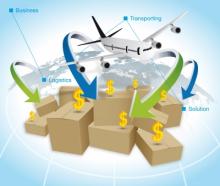You are here
- Guest Blogger |
- Management |
- Wed, 08/19/2015 - 21:15

Jeremy Bodenhamer, CEO of ShipHawk
The online shopping cart is the essential technology that allows us to indulge in products, apparel and decor as quickly as we can click. While filling it up takes mere seconds, the act of actually purchasing the items we put in it can bring about a flurry of regret and frustration, leading to a reported $4 trillion worth of merchandise left abandoned in online shopping carts in 2015 alone. Yes, four trillion. Let that number sink in.
More than half of that figure, however, has nothing to do with the consumer’s desire for the product(s) initially placed in the cart.
It has to do with the cost of shipping.
Why? How is it that the act of packing and shipping a desired product is responsible for trillions of dollars in unrealized sales?
For one, many retailers simply don’t have a clear and easy way to calculate the costs of packing and shipping items, or a to way share those figures with potential customers. In turn, many customers come to a screeching halt during the check-out process when they finally see the shipping costs associated with their purchase, and many abandon their purchase altogether. Business suffers as consumers get cold feet due to a lack of transparent total cost and shipping estimates. If information isn’t provided up front, the shopping cart displays a misguided price point, leaving the consumer much more likely to bow out when it comes time to complete the purchase.
So what’s the answer? How do we involve the customer without blindsiding them with extra fees and incurred costs? How can we empower customers regardless of their shipping destination, item size, or arrival date requirements?
The answer is deceptively simple: give customers a say in the way their items are delivered. Businesses can provide customers with multiple shipping options based on price, speed, and method of delivery. Using technology, businesses can make transparent for customers extra fees and incurred costs the moment an item gets thrown into the shopping cart. If transparency were the norm, chances are there would be a higher rate of checkout completion, customer satisfaction, and higher margins for retailers.
This theory has been supported by studies (such as this one commissioned by the U.S. Postal Service) that showed increased purchase rates and fewer abandoned shopping carts with more robust shipping options. When a customer is aware that they have a choice in shipping destination, carrier, and delivery time, they feel supported, regardless of what choices they end up making.
But how do retailers actually implement this?
Effective shipping comes down to the three “P’s”: Pricing, Packaging, & Process.
Pricing
The ability to provide instant quotes for delivery on the product page (rather than just on the checkout page) leads to a level of transparency from the get-go, eliminating unpleasant confusion and surprises. This does require a level of sophistication from the seller such as knowing the price point for specific shipping services. It also takes a balance of understanding when and by what margin costs can be reduced. Free delivery, for example, can often lead to a spike in sales, but may decrease margins since the retailer is ultimately footing the bill for shipping costs. Sellers, therefore, must take into account various shipping methods and prices to determine which is the most effective and profitable for both buyers and sellers.
Packaging
The way in which goods are packaged has a direct effect on how items can be shipped. The optimal packages take up the least amount of space while offering adequate protection for the goods inside. These calculated parameters significantly reduce costs and time associated with shipping.
Suboptimal packaging is often selected due to a lack of understanding of how it impacts the entire shipping process. Selecting a box that simply “works” may add significant cost to each shipment. Again, a level of “shipping sophistication” on the part of the retailer that extends to the warehouse will go a long way towards improving the bottom line.
Process
From the moment an item is available on an e-commerce website, the dimensions and weight should be stored on the back end of the site, along with inventory and warehouse location data. The site should also utilize technology for determining the most effective boxes for packaging.
Having this information on hand streamlines the delivery process as chosen by the customer, gets the product into the lowest cost packaging in a timely manner, and reduces cost due to incorrect or unnecessary shipping parameters. Over time, the retailer’s database of such parameters will grow and help inform future optimization. E-commerce sites must be able to present the customer with instant customization options up front for shipping (i.e., delivery method, price, arrival date) and then deliver on those options. Providing these will lead to far less cart abandonment and, ultimately, to higher sales.
These simple steps are a good starting point to optimize shipping and maximize profits. After all, effective shipping can be the difference between a prosperous online retail business and a site swelling with initial interest but littered with abandoned carts.
[Image courtesy of emptyglass at FreeDigitalPhotos.net]
About the Author
Jeremy Bodenhamer is the Co-Founder and CEO of ShipHawk, a logistics automation technology that provides instant shipping solutions that help businesses grow. He is the leading expert in the intersection of shipping and eCommerce, has been featured on TechCrunch, AOL, and SoCalTech, is an active volunteer in the community, and is a frequent panelist and speaker on innovative technology and business development. Jeremy lives in Santa Barbara with his wife, educator and youth advocate Bethany Bodenhamer, and their three sons.
Follow The Blog
Blog Categories
- Business Ops. (45)
- Editors (3)
- Entrepreneurship (196)
- Finance (25)
- Leadership (529)
Blog Authors
- Guest Blogger (835)
- Cynthia Kay (92)
- Linda Henman (78)
- Dianna Booher (46)
- Craig Ross (31)













